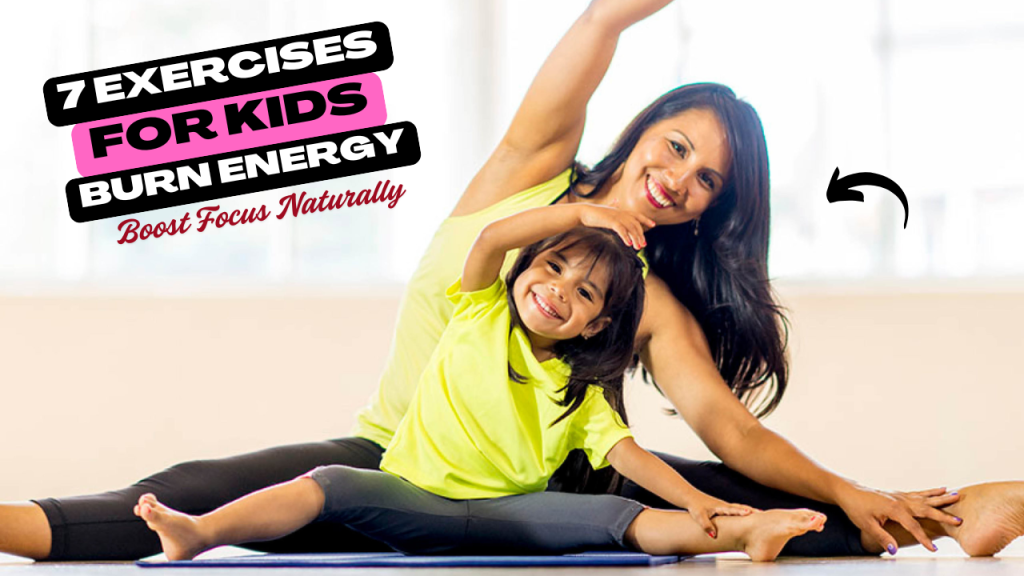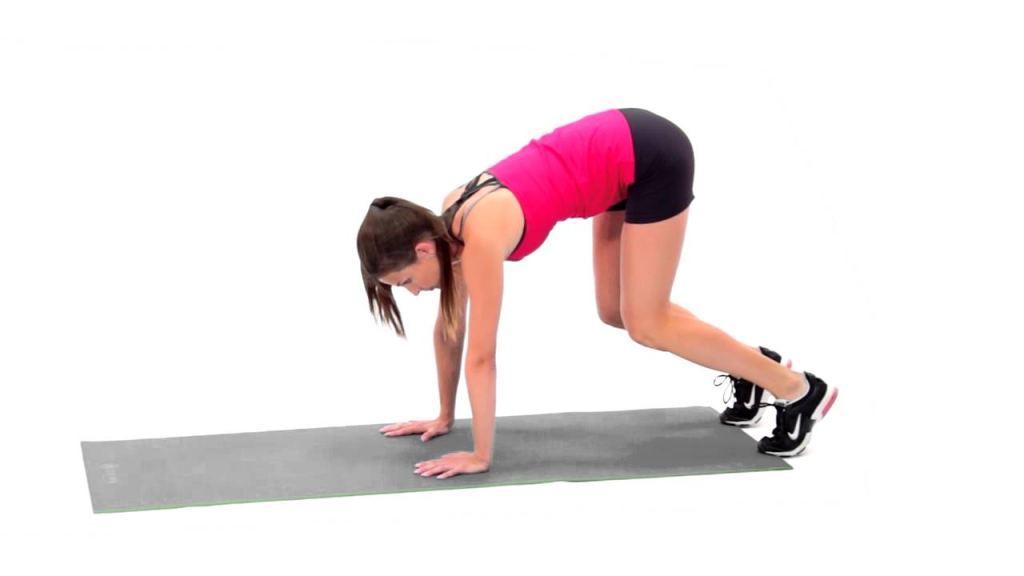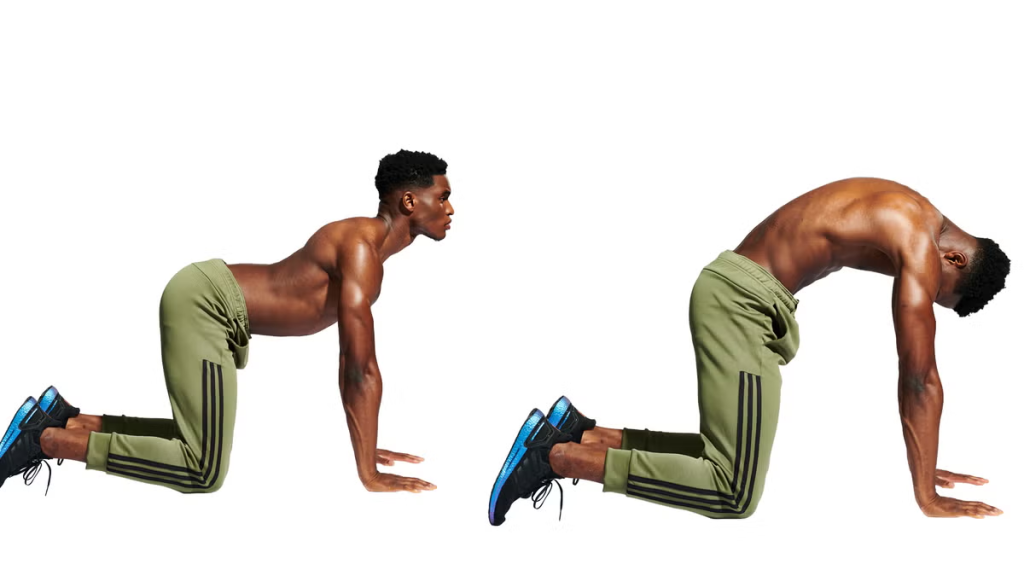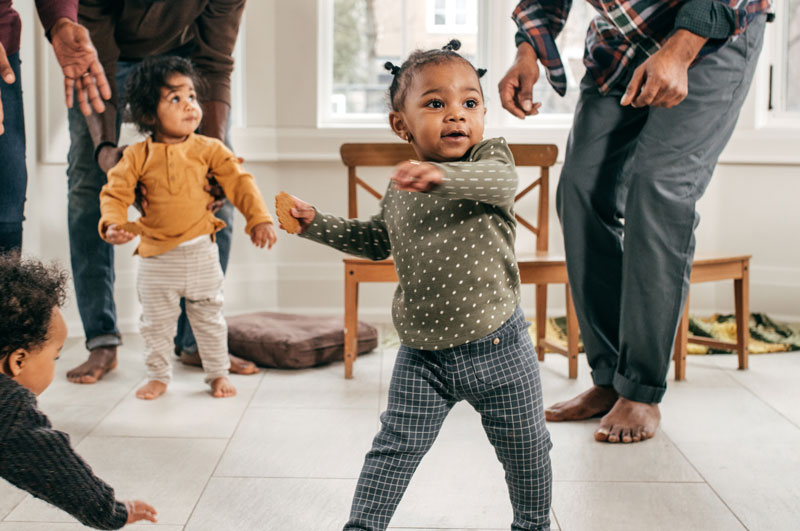Do you know that a quick 10-minute movement break can improve a child’s ability to concentrate by nearly 20%?
When children are constantly on the move, fidgeting, or struggling to stay focused, it’s often labeled as hyperactivity. But what if the real solution isn’t “calming them down,” but channeling their energy effectively?
While medication is sometimes used, physical activity remains one of the most powerful and natural tools to help hyperactive kids burn off excess energy and sharpen their focus. The right exercises can regulate mood, improve attention span, and promote better sleep — all without a single pill.
Here’s a list of 7 simple, fun, and science-backed exercises that parents and educators can easily introduce at home or in the classroom. These are more than just movements — they’re strategic activities designed to support the unique needs of hyperactive kids.

What Can Happen After 30 Days of These Exercises?
| Benefit | Description |
|---|---|
| Improved Focus | Enhanced ability to concentrate on tasks like reading, homework, and learning. |
| Better Sleep Patterns | Physical activity promotes more restful and consistent sleep cycles. |
| Reduced Restlessness | Less fidgeting and impulsive behavior during quiet activities or class time. |
| Increased Emotional Control | Exercise helps regulate mood swings and reduces frustration or irritability. |
| Boosted Self-Esteem | Completing fun challenges builds confidence and a sense of accomplishment. |
| Stronger Body Awareness | Better coordination, balance, and understanding of body movement and control. |
| Healthier Daily Routine | Incorporating exercise creates structure, improving overall discipline. |
| Improved Social Interaction | Group activities or games can improve peer relationships and cooperation. |
1. Animal Walks – Playful, Yet Powerful
Why it works: Animal walks engage both the brain and body. They involve coordination, core strength, and imagination — which helps redirect restless energy into controlled movement.
Try these animal moves:

Bear Crawl: Hands and feet on the floor, hips high.

Frog Jump: Deep squat, jump forward.

Crab Walk: Sit and lift hips off the floor, walking backward.
Fun Fact: Bilateral movements (like crawling) stimulate both sides of the brain, enhancing cognitive development and focus.
2. Wall Push-Ups – Small Space, Big Impact
Why it works: This strength-based, isometric exercise is excellent for releasing pent-up energy and promoting body awareness.

How to do it:
- Stand about a foot away from the wall.
- Place both hands on the wall at shoulder height.
- Bend elbows and push back in slow, controlled reps.
Do 10–15 reps per set. It’s quick, grounding, and ideal for transition times (like before homework).
3. Balloon Tennis – Focus & Fun Combined
Why it works: Balloon tennis improves hand-eye coordination and requires sustained attention, all while being entertaining.

How to play:
- Blow up a balloon.
- Use your hand, a paper plate paddle, or even a fly swatter to rally back and forth.
Did You Know? The unpredictable movement of a balloon requires more mental tracking than a ball — giving the brain a mini workout too.
4. Jumping Jacks – Instant Energy Burner
Why it works: This classic cardio move is simple but highly effective. It raises the heart rate, boosts endorphins, and resets the nervous system — ideal for kids who can’t sit still.

How to do it:
- Arms and legs out and in — in rhythmic, bouncing movements.
- Start with 20–30 seconds and build up to a minute.
Use it between tasks as a “brain break” to refresh focus.
5. Yoga Animal Poses – Calm in Motion
Why it works: Yoga helps kids stretch, breathe, and become more aware of their bodies. Using animal-themed poses keeps it playful and engaging.
Try these poses:

Cat-Cow Pose: Promotes spinal flexibility and deep breathing.

Cobra Pose: Stretches the chest and strengthens the back.

Downward Dog: Builds balance and coordination.
Myth Buster: Yoga isn’t just for calm kids — it can actually teach hyperactive children how to self-regulate over time.
6. Obstacle Courses – Structured Adventure
Why it works: Obstacle courses channel chaotic energy into goal-oriented action. They build motor planning skills and offer a sense of accomplishment.
How to create one:
- Use cushions, cones, tunnels, chairs, or tape lines.
- Add simple commands like crawl, hop, balance, and spin.
Tip: Let kids help design the course — planning it builds executive functioning skills like sequencing and strategy.
7. Dance & Freeze – Movement with Control
Why it works: This fun game combines energetic movement with moments of stillness, training kids to develop better self-regulation.

How to play:
- Play upbeat music.
- Let them dance freely.
- Pause the music and call “Freeze!” — they must stop instantly.
Interesting Fact: Games that alternate between movement and stillness mimic attention tasks in real life, enhancing impulse control.
Why Exercise Matters More Than You Think
While many associate hyperactivity only with behavior, it’s deeply connected to how a child’s nervous system processes stimulation.
Exercise doesn’t just burn energy — it rewires the brain by increasing dopamine, norepinephrine, and serotonin — the same brain chemicals targeted by ADHD medications.
Incorporating regular, enjoyable movement into a child’s day helps:
- Improve concentration
- Boost mood and confidence
- Reduce anxiety
- Encourage better sleep
- Support emotional regulation
Final Thoughts: Movement is Medicine
Every hyperactive child is unique, but one thing is universally true: Movement isn’t a distraction — it’s the solution.
By introducing easy, fun exercises like these, you empower children to take charge of their energy and attention — all while supporting their physical and mental well-being.
So, the next time your child is bouncing off the walls, don’t say “sit still” — say “let’s move!”
Frequently Asked Questions (FAQs)
Why do hyperactive kids need exercise?
Exercise is one of the most effective natural ways to help hyperactive kids regulate their energy levels. Physical activity boosts brain chemicals like dopamine and serotonin, which improve mood, focus, and attention span — all essential for children who struggle with hyperactivity.
How often should hyperactive kids do physical activity?
Ideally, children should have at least 60 minutes of physical activity daily. However, even short bursts of 10–15 minutes spread throughout the day can make a big difference in managing hyperactive behavior and improving focus.
Can these exercises help with ADHD?
Yes, many of the exercises listed are beneficial for children with ADHD. Activities that involve coordination, rhythm, and bilateral movement (like crawling or dancing) stimulate brain development and support executive function — often impaired in kids with ADHD.
What’s the best time of day for kids to exercise?
There’s no single “best” time, but many children benefit from morning exercise to start the day with focus, and afternoon movement to release built-up energy. Pre-homework or after-school movement breaks can also improve concentration.
Are these exercises safe to do at home?
Yes, all of the exercises listed — like wall push-ups, animal walks, and yoga poses — are designed to be safe, low-impact, and equipment-free. Always supervise younger children and create a clutter-free space for movement.
My child resists structured workouts. What should I do?
Make it fun and interactive! Use games, themes (like jungle adventures), or music to keep your child engaged. The goal is not discipline — it’s joyful movement that supports their brain and body.
Do these exercises work for teenagers too?
Absolutely. While the names and structure can be adjusted, teens can benefit from similar movements — just with more intensity or a mature twist (e.g., yoga flows instead of animal poses, circuit training instead of obstacle courses).
How can I make these exercises a daily habit?
Start small — just 5–10 minutes a day. Set a consistent time (after breakfast, before homework), use a reward chart, and involve your child in choosing the activities. When it feels fun and achievable, consistency comes naturally.
What if my child gets overstimulated by exercise?
Some kids may initially get more excited during movement. That’s okay. Pair energizing exercises with cool-down activities like breathing games, stretching, or quiet play to help transition back to calm.





